On November 10 1988, a heavily airbrushed photo was shown at a
press briefing by Assistant Secretary of Defense for Public Affairs, J.
Daniel Howard. Until that moment the subject of the photo had been one
of the world’s most closely-held secrets.
The photograph was of the Lockheed F-117, the legendary ‘stealth fighter’.
It was a new and weird shape. Slightly preceding this, (in April 1988) the Northrop B-2 had also emerged from the Black world of secret defence projects. The B-2 ‘stealth bomber’ was a charcoal grey flying-wing, clearly designed by the same person who had created the Batmobile.
Stealth was big news. Until then, aeroplanes had been tubes with wings, designed primarily with air particles in mind, now they were shaped for their reaction with radio waves; things had suddenly changed. As an aeroplane-fixated ten year old, I was hungry for more information on this new world. With its secrecy, its potency and dramatic unveilings, it was wildly exciting.
So I was very happy, when I was bought a copy of Stealth Warplanes, a book by Doug Richardson. I believed that this book, with its thrilling cover, was my secret pass to the nefarious world of Stealth. I picked up another copy today, as I was curious to see how well this book had stood the test of 23 years.
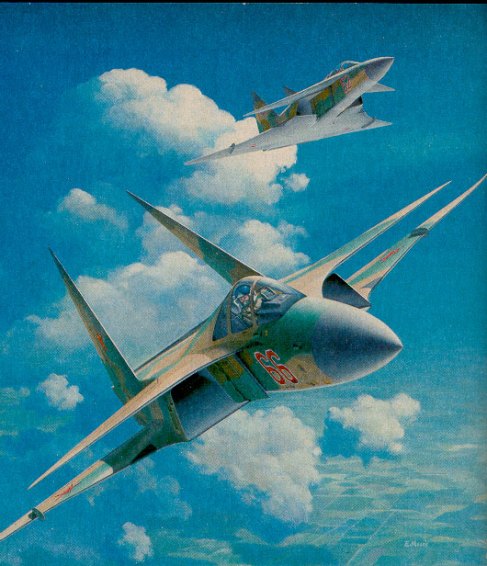 Soviet developments could not be ignored by the book, despite the
fact that at this time, nothing about Soviet stealth projects was known
in the press. So the ‘Mikoyan MiG-37’ was pure conjecture, based on the
pure ‘conjecture’ (more on this later) of the MiG-2000. The
MiG-2000 was a notional threat aircraft devised by General Dynamics’
Richard Ward, of what a follow-up to the MiG-29 might look like. It was
intended to give the international F-16 community an idea of what they
maybe up against in the year 2000. This was based on Ward’s observations
of several technologies the Soviets appeared to be very interested in,
most notably thrust vectoring and the canard-delta arrangement. At this
time it was rumoured that the MiG-35 was to be a single-engined aircraft
in the F-16-class, though in retrospect it is more likely that this
rumour related to the Izdeliye 33 (Izd 33) which would have probably been designated MiG-33 (and may have been a design influence on the JF-17).
Soviet developments could not be ignored by the book, despite the
fact that at this time, nothing about Soviet stealth projects was known
in the press. So the ‘Mikoyan MiG-37’ was pure conjecture, based on the
pure ‘conjecture’ (more on this later) of the MiG-2000. The
MiG-2000 was a notional threat aircraft devised by General Dynamics’
Richard Ward, of what a follow-up to the MiG-29 might look like. It was
intended to give the international F-16 community an idea of what they
maybe up against in the year 2000. This was based on Ward’s observations
of several technologies the Soviets appeared to be very interested in,
most notably thrust vectoring and the canard-delta arrangement. At this
time it was rumoured that the MiG-35 was to be a single-engined aircraft
in the F-16-class, though in retrospect it is more likely that this
rumour related to the Izdeliye 33 (Izd 33) which would have probably been designated MiG-33 (and may have been a design influence on the JF-17).
Regardless, it looked to many observers that MiG-37 seemed the most likely designation for the first Soviet stealth fighter. As the text points out:
“In the autumn of 1987, the US plastic model manufacturer Testors.. launched its model of the “MiG-37B Ferret E”- a Soviet equivalent to the Lockheed stealth fighter. Its appearance must have caused a few smiles around the Mikoyan design bureau. As its manufacturer admitted.. Its reception in the Pentagon must have been less amusing. Here in widely-distributed form was the first model to widely illustrate the use of RCS reduction technique.” (more on Testor’s MiG-37 can be seen here). It seems that the concepts of a gridded intake and a surface made of flat panels was already there for those looking. And Testors’ model designer John Andrews certainly seemed to have his ear to the ground.
One of the most fascinating features of this book was its strong belief in ‘round stealth’. Many of the hypothetical aeroplanes in this book feature rounded-off wingtips, noses and fin-tips of the hypothetical aircraft. Radar returns would be scattered from these curves:
Of course complex curves are used in modern low observable designs, but this ‘round stealth’ is not like the two US schools of stealth that have emerged, the Lockheed approach (sharp angles and flat surfaces) and the Northrop approach (as flat as possible, and of the flying wing configuration for subsonic designs, as seen on the B-2, Lockheed Martin RQ-170, Dassault NeuroN etc). When Northrop and McDonnell Douglas designed the YF-23, they incorporated the ‘flat as a pancake’ Northrop approach.
The notional MiG-37 is a tactical fighter that weighs around 50,000 lb and is powered by two 30,000 lb (in reheat) thrust class turbofans. It has two-dimensional vectored thrust provided by ‘slotted low-RCS nozzles’. It is a two-seater, with a canard delta planform and two canted out vertical fins. The concept emphasizes performance and reduced radar cross section.
Did history provide us with a real MiG-37 to compare it to? The simple answer is yes. The Mikoyan Project 1.44/1.42 was a technology demonstrator that first flew in 2000. It displayed some similarities to Richardson’s MiG-37.
MiG 1.44/1.42
It was a canard delta, it did have out twin canted tails. The thrust class was similar, though the real aircraft was even more powerful, with two Lyulka AL-41F turbofans rated at 176 kN (39,680 lb) in reheat. Weight was between 42-62,000 lb depending on fuel load, test equipment etc, so again- excellent guesswork. It certainly did not have rounded-off wingtips or tail-fins. The nozzles were not flat, despite the stealth advantages these could have conferred. The reason for the inclusion of round exhaust nozzles could have been one or more of the following-
1. 3D vectoring was envisioned, requiring a circular nozzle (perhaps extreme manoeuvrability was considered more important than minimum RCS)
2. Russian metallurgy was not good enough to make square nozzles which could withstand the high temperatures of a vectoring jet nozzle
3. The actual production version if made, would have featured 2D nozzles
4. They were not required, or were not consider a suitable design feature
It was claimed that the aircraft would feature plasma stealth technology, an exotic idea that a General Electric employee had filed patents relating to in 1956. Little has been heard about plasma stealth since, though the fact that the later PAK FA is so carefully shaped suggests it is not a technology that was made to work satisfactorily. Problems in developing working plasma stealth include the generation of sufficient power to create the required plasma layer, and the operation of radar and radio in what amounts to a ‘radio blackout’. Talk of this technology may have been deliberate disinformation.
The MiG 1.44/1.42, a candidate for the Mnogofunksionalni Frontovoy Istrebitel (Multifunctional Frontline Fighter) programme was cancelled (though some contend that research from this effort found its way into the Chengdu J-20 project, though there is no direct evidence of this). Sukhoi’s rival S-47 ‘Berkut’ took a radically different approach and adopted canards with forward swept wings, as can be seen from later developments this configuration appears to have been a design dead-end, at least for the time being.
As far as we know MiG’s current stealth efforts are devoted to developing a Northrop-style UCAV with Sukhoi (using experience gained on MiG’s cancelled ‘Skat’ UCAV).
The Russian stealth fighter in development today is the Sukhoi PAK FA. The design features with some smaller similarities with Richardson’s MiG-37. Both the ‘MiG-37’ and the PAK FA feature a IRST/laser ranger finder (à la MiG-29/Su-27)- something the Russians very much appreciate, and there seems relatively little effort to reduce this sensors radar cross section.
http://www.amazon.co.uk/gp/product/071060131X/ref=as_li_qf_sp_asin_il_tl?ie=UTF8&camp=1634&creative=6738&creativeASIN=071060131X&linkCode=as2&tag=hushkit-21
It appears the PAK FA is built with a more attention to ease of maintenance than the ‘hygienically’ smooth Raptor, which seems to favour absolute minimum radar return (but this is pure speculation). The PAK FA does not have a canards (a difficult feature to make stealthy, nevertheless featuring on the J-20), instead it has an innovative kind of movable leading edge root extension (described by some as Povorotnaya Chast Naplyva or PChN). The Sukhoi approach to stealth includes elements seen in both the Northrop and LM schools, but seems to have less emphasis on achieving a minute RCS to the detriment of serviceability and aerodynamic efficiency.
Richardson’s MiG-37 concept was, given the information available to him, an excellent piece of guesswork, and a pleasantly revealing insight into a ‘crossroads’ period of aviation history. It is also interesting that, on first impressions, the MiG-37 was a more accurate guess than Ward’s MiG-2000. However, there is more to the story than this, as Richard Ward was one of the most experienced figures in the design of stealth aircraft. General Dynamics had inherited a wealth of stealth research from Convair, from projects including the A-11 and Kingfish. Ward probably worked on the Model 100/Sneaky Pete and other A-12 precursors. As Bill Sweetman said to Hush-Kit: “He knew what to avoid with MiG-2000.”
The PAK-DA is a new stealth bomber project at a very early stage of development.
Follow my vapour trail on Twitter: @Hush_kit
Do you have an idea for a Hush-Kit article you would like to write? Are you an editor with pages to fill? Contact: hushkiteditorial@gmail.com
Special thanks to the great Bill Sweetman for ironing out several of the facts in the original version of this. There are likely to be further amendments to this piece at a later date.
The photograph was of the Lockheed F-117, the legendary ‘stealth fighter’.
It was a new and weird shape. Slightly preceding this, (in April 1988) the Northrop B-2 had also emerged from the Black world of secret defence projects. The B-2 ‘stealth bomber’ was a charcoal grey flying-wing, clearly designed by the same person who had created the Batmobile.
Stealth was big news. Until then, aeroplanes had been tubes with wings, designed primarily with air particles in mind, now they were shaped for their reaction with radio waves; things had suddenly changed. As an aeroplane-fixated ten year old, I was hungry for more information on this new world. With its secrecy, its potency and dramatic unveilings, it was wildly exciting.
So I was very happy, when I was bought a copy of Stealth Warplanes, a book by Doug Richardson. I believed that this book, with its thrilling cover, was my secret pass to the nefarious world of Stealth. I picked up another copy today, as I was curious to see how well this book had stood the test of 23 years.
‘Mikoyan MiG-37’

Ward’s
MiG-2000 featured inward canting fins. Another popular ’80s idea for
stealth aircraft, possibly stemming from leaked information on
Lockheed’s ‘Have Blue’.
Regardless, it looked to many observers that MiG-37 seemed the most likely designation for the first Soviet stealth fighter. As the text points out:
“In the autumn of 1987, the US plastic model manufacturer Testors.. launched its model of the “MiG-37B Ferret E”- a Soviet equivalent to the Lockheed stealth fighter. Its appearance must have caused a few smiles around the Mikoyan design bureau. As its manufacturer admitted.. Its reception in the Pentagon must have been less amusing. Here in widely-distributed form was the first model to widely illustrate the use of RCS reduction technique.” (more on Testor’s MiG-37 can be seen here). It seems that the concepts of a gridded intake and a surface made of flat panels was already there for those looking. And Testors’ model designer John Andrews certainly seemed to have his ear to the ground.
One of the most fascinating features of this book was its strong belief in ‘round stealth’. Many of the hypothetical aeroplanes in this book feature rounded-off wingtips, noses and fin-tips of the hypothetical aircraft. Radar returns would be scattered from these curves:
“…the rounded planform (of the MiG-37) shown here would ensure that reflected energy was scattered over a range of directions.”
In reality, this design idea was never used (albeit to a small degree
on some cruise missiles), and it could be argued that the cultivation
of this idea was the result of deliberate disinformation by several
companies. Loral, Northrop and Lockheed (in several ATF artworks) may
have been actively involved in this attempt to draw attention away from
the F-117-facetingand B-2 flying wing approach. This idea can be seen on
most ‘F-19s’ and is evident on this MiG-37.Of course complex curves are used in modern low observable designs, but this ‘round stealth’ is not like the two US schools of stealth that have emerged, the Lockheed approach (sharp angles and flat surfaces) and the Northrop approach (as flat as possible, and of the flying wing configuration for subsonic designs, as seen on the B-2, Lockheed Martin RQ-170, Dassault NeuroN etc). When Northrop and McDonnell Douglas designed the YF-23, they incorporated the ‘flat as a pancake’ Northrop approach.
The notional MiG-37 is a tactical fighter that weighs around 50,000 lb and is powered by two 30,000 lb (in reheat) thrust class turbofans. It has two-dimensional vectored thrust provided by ‘slotted low-RCS nozzles’. It is a two-seater, with a canard delta planform and two canted out vertical fins. The concept emphasizes performance and reduced radar cross section.
Did history provide us with a real MiG-37 to compare it to? The simple answer is yes. The Mikoyan Project 1.44/1.42 was a technology demonstrator that first flew in 2000. It displayed some similarities to Richardson’s MiG-37.
MiG 1.44/1.42
It was a canard delta, it did have out twin canted tails. The thrust class was similar, though the real aircraft was even more powerful, with two Lyulka AL-41F turbofans rated at 176 kN (39,680 lb) in reheat. Weight was between 42-62,000 lb depending on fuel load, test equipment etc, so again- excellent guesswork. It certainly did not have rounded-off wingtips or tail-fins. The nozzles were not flat, despite the stealth advantages these could have conferred. The reason for the inclusion of round exhaust nozzles could have been one or more of the following-
1. 3D vectoring was envisioned, requiring a circular nozzle (perhaps extreme manoeuvrability was considered more important than minimum RCS)
2. Russian metallurgy was not good enough to make square nozzles which could withstand the high temperatures of a vectoring jet nozzle
3. The actual production version if made, would have featured 2D nozzles
4. They were not required, or were not consider a suitable design feature
It was claimed that the aircraft would feature plasma stealth technology, an exotic idea that a General Electric employee had filed patents relating to in 1956. Little has been heard about plasma stealth since, though the fact that the later PAK FA is so carefully shaped suggests it is not a technology that was made to work satisfactorily. Problems in developing working plasma stealth include the generation of sufficient power to create the required plasma layer, and the operation of radar and radio in what amounts to a ‘radio blackout’. Talk of this technology may have been deliberate disinformation.
The MiG 1.44/1.42, a candidate for the Mnogofunksionalni Frontovoy Istrebitel (Multifunctional Frontline Fighter) programme was cancelled (though some contend that research from this effort found its way into the Chengdu J-20 project, though there is no direct evidence of this). Sukhoi’s rival S-47 ‘Berkut’ took a radically different approach and adopted canards with forward swept wings, as can be seen from later developments this configuration appears to have been a design dead-end, at least for the time being.
As far as we know MiG’s current stealth efforts are devoted to developing a Northrop-style UCAV with Sukhoi (using experience gained on MiG’s cancelled ‘Skat’ UCAV).
The Russian stealth fighter in development today is the Sukhoi PAK FA. The design features with some smaller similarities with Richardson’s MiG-37. Both the ‘MiG-37’ and the PAK FA feature a IRST/laser ranger finder (à la MiG-29/Su-27)- something the Russians very much appreciate, and there seems relatively little effort to reduce this sensors radar cross section.
http://www.amazon.co.uk/gp/product/071060131X/ref=as_li_qf_sp_asin_il_tl?ie=UTF8&camp=1634&creative=6738&creativeASIN=071060131X&linkCode=as2&tag=hushkit-21
It appears the PAK FA is built with a more attention to ease of maintenance than the ‘hygienically’ smooth Raptor, which seems to favour absolute minimum radar return (but this is pure speculation). The PAK FA does not have a canards (a difficult feature to make stealthy, nevertheless featuring on the J-20), instead it has an innovative kind of movable leading edge root extension (described by some as Povorotnaya Chast Naplyva or PChN). The Sukhoi approach to stealth includes elements seen in both the Northrop and LM schools, but seems to have less emphasis on achieving a minute RCS to the detriment of serviceability and aerodynamic efficiency.
Richardson’s MiG-37 concept was, given the information available to him, an excellent piece of guesswork, and a pleasantly revealing insight into a ‘crossroads’ period of aviation history. It is also interesting that, on first impressions, the MiG-37 was a more accurate guess than Ward’s MiG-2000. However, there is more to the story than this, as Richard Ward was one of the most experienced figures in the design of stealth aircraft. General Dynamics had inherited a wealth of stealth research from Convair, from projects including the A-11 and Kingfish. Ward probably worked on the Model 100/Sneaky Pete and other A-12 precursors. As Bill Sweetman said to Hush-Kit: “He knew what to avoid with MiG-2000.”
The PAK-DA is a new stealth bomber project at a very early stage of development.
Follow my vapour trail on Twitter: @Hush_kit
Do you have an idea for a Hush-Kit article you would like to write? Are you an editor with pages to fill? Contact: hushkiteditorial@gmail.com
Special thanks to the great Bill Sweetman for ironing out several of the facts in the original version of this. There are likely to be further amendments to this piece at a later date.

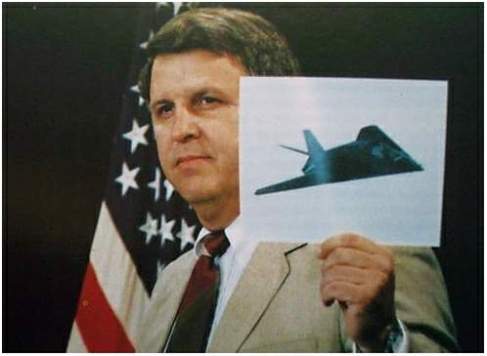
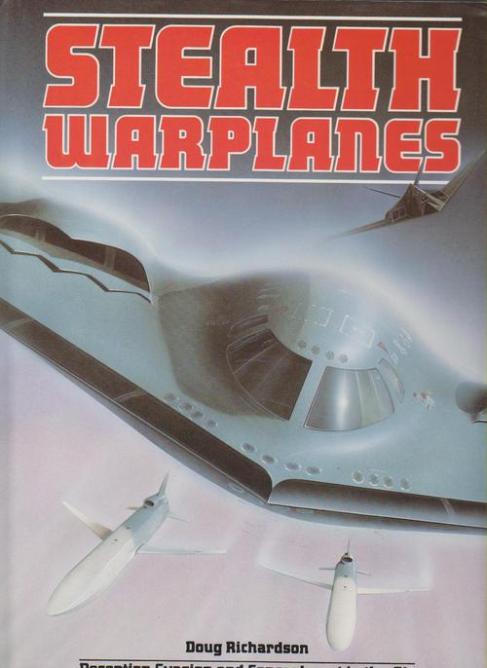
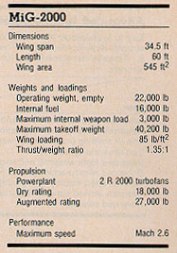

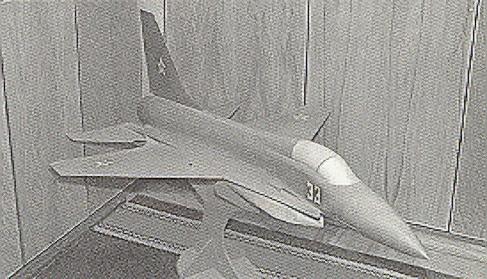
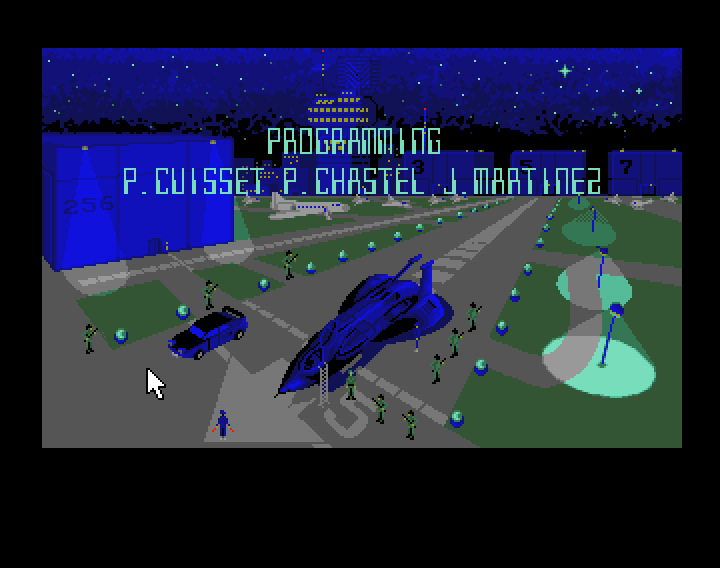
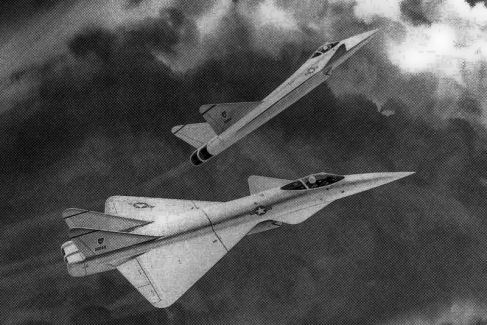
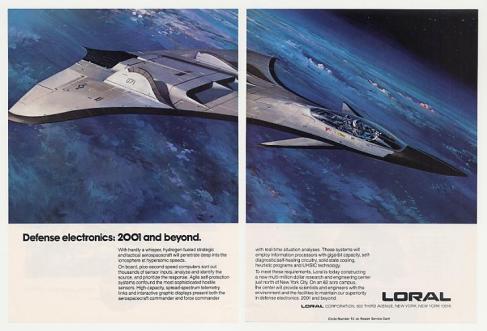
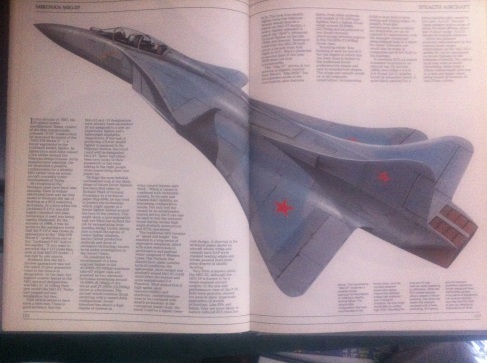
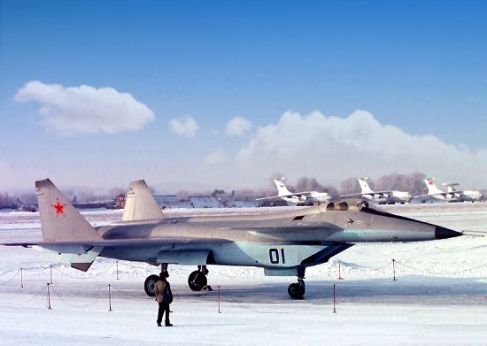
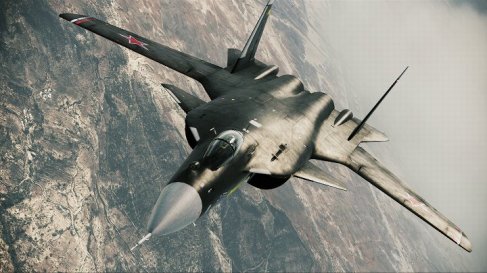
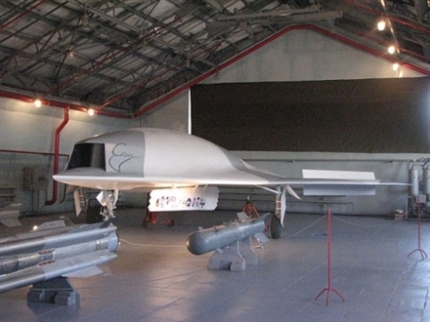
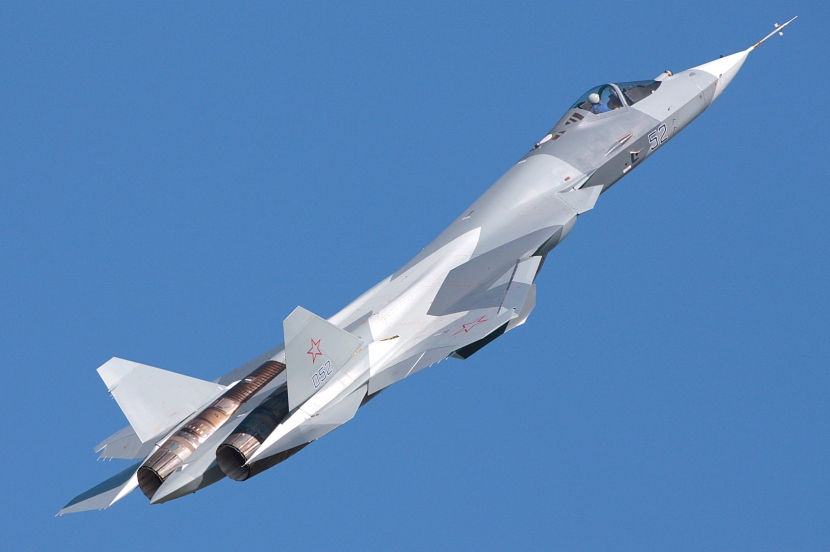
Δεν υπάρχουν σχόλια:
Δημοσίευση σχολίου